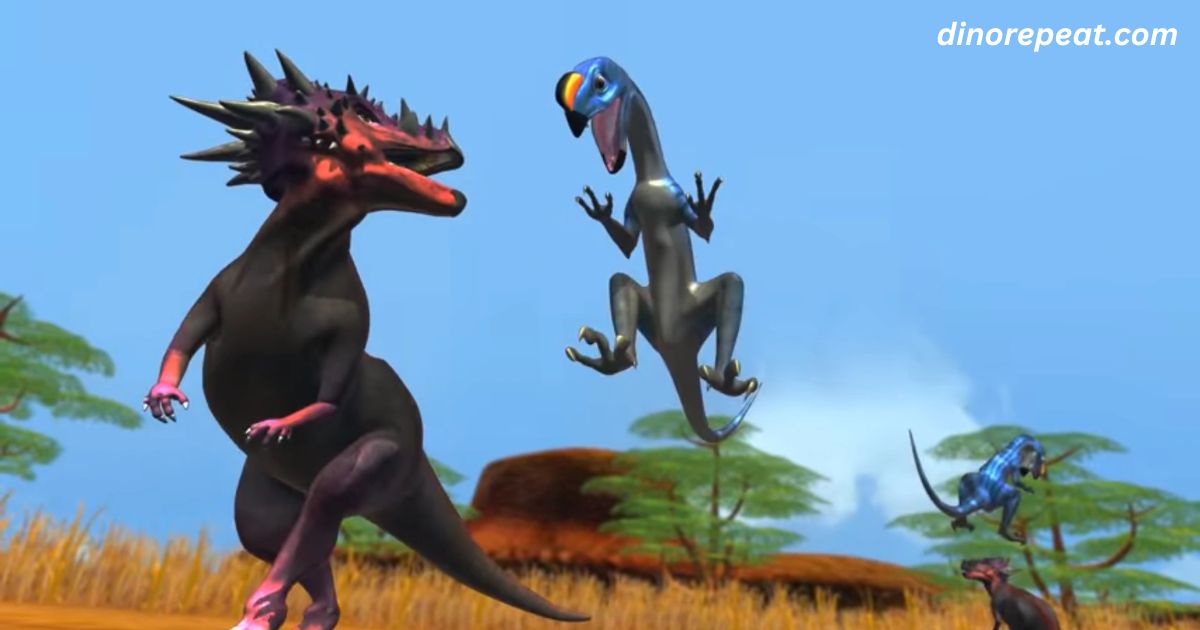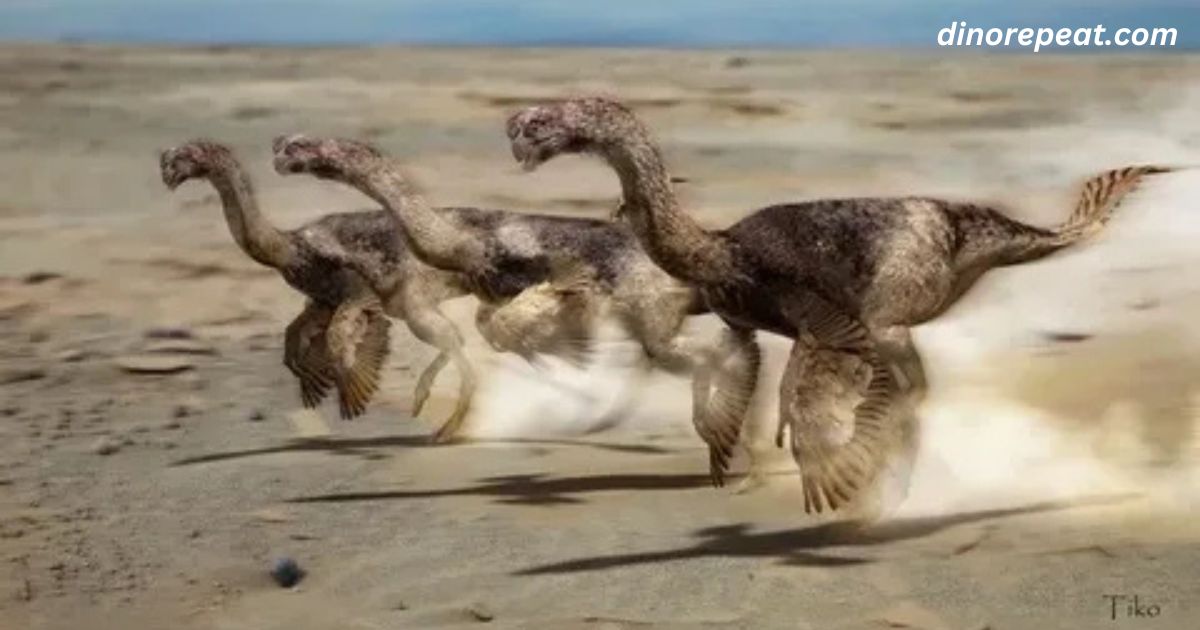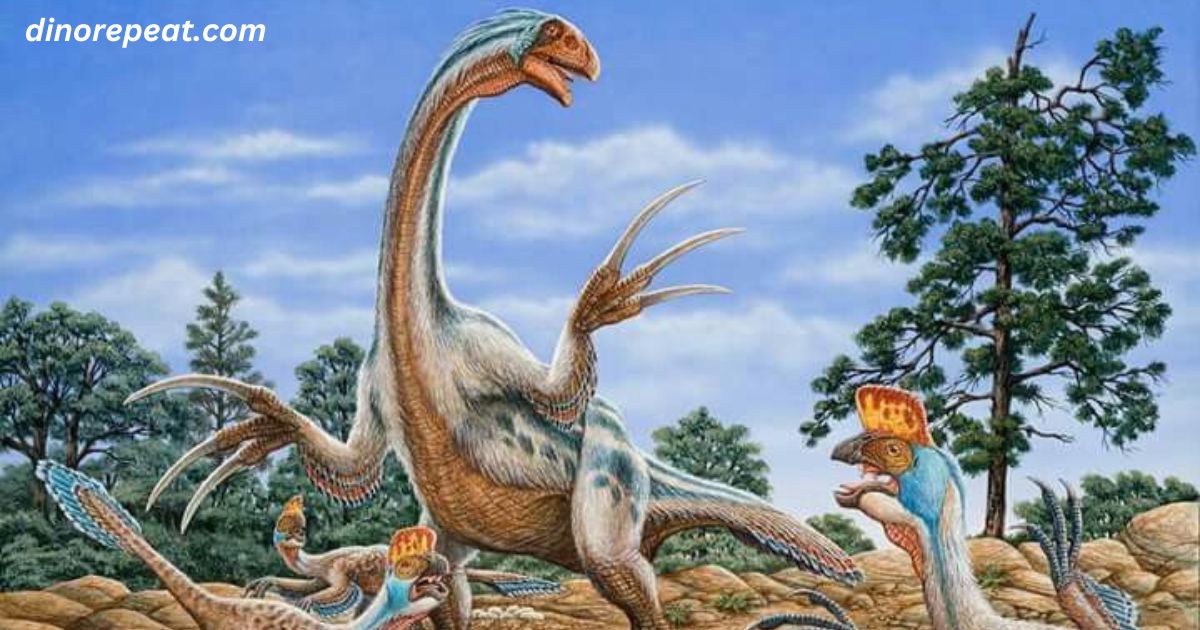How Did the Oviraptor’s Diet Affect Its Behavior?

The Oviraptor, a small theropod dinosaur from the Late Cretaceous period, is often remembered for its unique and somewhat controversial diet.
Once thought to be a ruthless egg thief, recent discoveries have painted a more nuanced picture of its dietary habits, showing that the Oviraptor was likely omnivorous.
This dietary flexibility had a significant influence on its behavior, both in terms of its feeding strategies and its interactions with its environment.
In this article, we’ll explore how the Oviraptor’s diet shaped its behavior, providing insights into its survival strategies, feeding patterns, and ecological role.
Understanding the Oviraptor’s Diet
Before we delve into the behavioral implications, it’s crucial to understand what the Oviraptor ate. The Oviraptor was initially labeled as an egg thief, largely because its fossils were often found near dinosaur nests with broken eggs.
However, further studies and fossil evidence suggest that it may have eaten a broader range of foods, including small animals, plants, and possibly even the eggs of other species, but not exclusively.
Omnivorous Feeding Habits
Modern analysis of the Oviraptor’s teeth and jaw structure indicates that it was likely omnivorous. Its beak-like mouth, which was suited for crushing, suggests that the dinosaur could consume both plant material and animals.

Fossilized remains of small vertebrates found near Oviraptor nests support the idea that it may have hunted smaller prey, such as insects, lizards, or even other dinosaurs. Additionally, its diet likely included fruits, seeds, and other plant-based materials, reflecting a varied eating pattern.
Feeding Strategies and Behavioral Adaptations
The Oviraptor’s omnivorous diet required it to adapt its behavior to access a wide range of food sources. The flexibility in its diet likely influenced its foraging strategies and overall survival tactics.
Opportunistic Feeding
The Oviraptor’s ability to eat both plants and animals suggests that it was an opportunistic feeder. This means that it could exploit whatever food sources were available, making it highly adaptable to changing environmental conditions.
For instance, during periods when animal prey was scarce, the Oviraptor could rely more heavily on plant-based food. Conversely, during times of abundance, it might have taken advantage of smaller prey or even eggs, supplementing its diet with easily accessible protein.
This flexibility in feeding would have encouraged a more diverse range of behaviors in the Oviraptor, from foraging in vegetation to stalking small animals or scavenging eggs. Such adaptability would have been a significant behavioral trait that helped the Oviraptor thrive in its ecological niche.
Territorial Behavior and Nesting Habits
Oviraptor fossils are often found in nests, suggesting that the dinosaur may have been involved in some form of parental care.
The behavior of protecting or guarding nests could have been directly related to its dietary needs. If the Oviraptor fed on eggs, as was initially assumed, then protecting its eggs from other egg-eating dinosaurs would have been essential for the survival of its offspring.
In addition, its territorial behaviors might have been influenced by the availability of food sources. If an Oviraptor claimed a territory rich in food, it would likely defend it against other animals to ensure a steady supply of resources.
Fossil evidence showing Oviraptors near other species’ nests could imply that these dinosaurs competed or scavenged, leading to territorial behaviors centered around food abundance.
Social Behavior and Group Dynamics
While it is difficult to know for sure whether Oviraptors were social animals, some fossil evidence suggests that they may have exhibited group behavior, especially during nesting seasons.
The need for protection of food resources, particularly if eggs were part of the diet, could have encouraged the formation of loose social groups. These groups may have helped with defense against predators or other egg-stealing dinosaurs.

Furthermore, the Oviraptor’s behavior could have included some form of cooperative feeding or even some form of social structure within these groups.
Though speculative, the varied diet of the Oviraptor could have shaped its interactions with others in its species, either through competition or collaboration in securing food resources.
Impact of Diet on Survival Strategies
The Oviraptor’s diverse diet played a pivotal role in its survival. It was not reliant on a single food source, which made it less vulnerable to changes in its environment or the local availability of food.
This dietary flexibility allowed the Oviraptor to adapt to various ecological shifts, ensuring its survival in a dynamic and competitive ecosystem.
By being able to switch between feeding on plants, small prey, and eggs, the Oviraptor could thrive in areas where other, more specialized predators might have struggled.
In times of food scarcity, this adaptability would have been a major behavioral advantage, enhancing its chances of survival.
Conclusion
The Oviraptor’s diet, which included a mix of plant matter, small animals, and possibly eggs, had a profound impact on its behavior.
Its ability to adapt its feeding strategies based on food availability likely influenced its territorial behavior, parental care, and social interactions.
The flexible nature of its diet also ensured its survival in diverse environments. Through a combination of opportunistic foraging, parental protection, and potential group dynamics, the Oviraptor demonstrates the complex relationship between diet and behavior in prehistoric animals.
By studying such behaviors, we can gain valuable insights into the ecological roles and survival strategies of ancient species.
FAQs
Was the Oviraptor primarily a carnivore?
No, the Oviraptor was likely omnivorous, eating a variety of foods including plants, small animals, and possibly eggs.
How did the Oviraptor’s diet affect its social structure?
The Oviraptor’s diet could have encouraged social behaviors such as cooperative feeding or territorial defense, especially during nesting seasons.
Did the Oviraptor hunt other dinosaurs?
The Oviraptor likely preyed on smaller vertebrates and possibly scavenged other dinosaurs’ eggs, but it did not exclusively hunt large prey.
What evidence supports the Oviraptor’s omnivorous diet?
Fossilized remains of small vertebrates and plant material near Oviraptor nests suggest that it had a varied diet.
How did the Oviraptor’s diet help it survive?
The Oviraptor’s ability to eat both plants and animals allowed it to adapt to changing environmental conditions and ensure survival when food was scarce. For more oviraptor information check the dinorepeat.